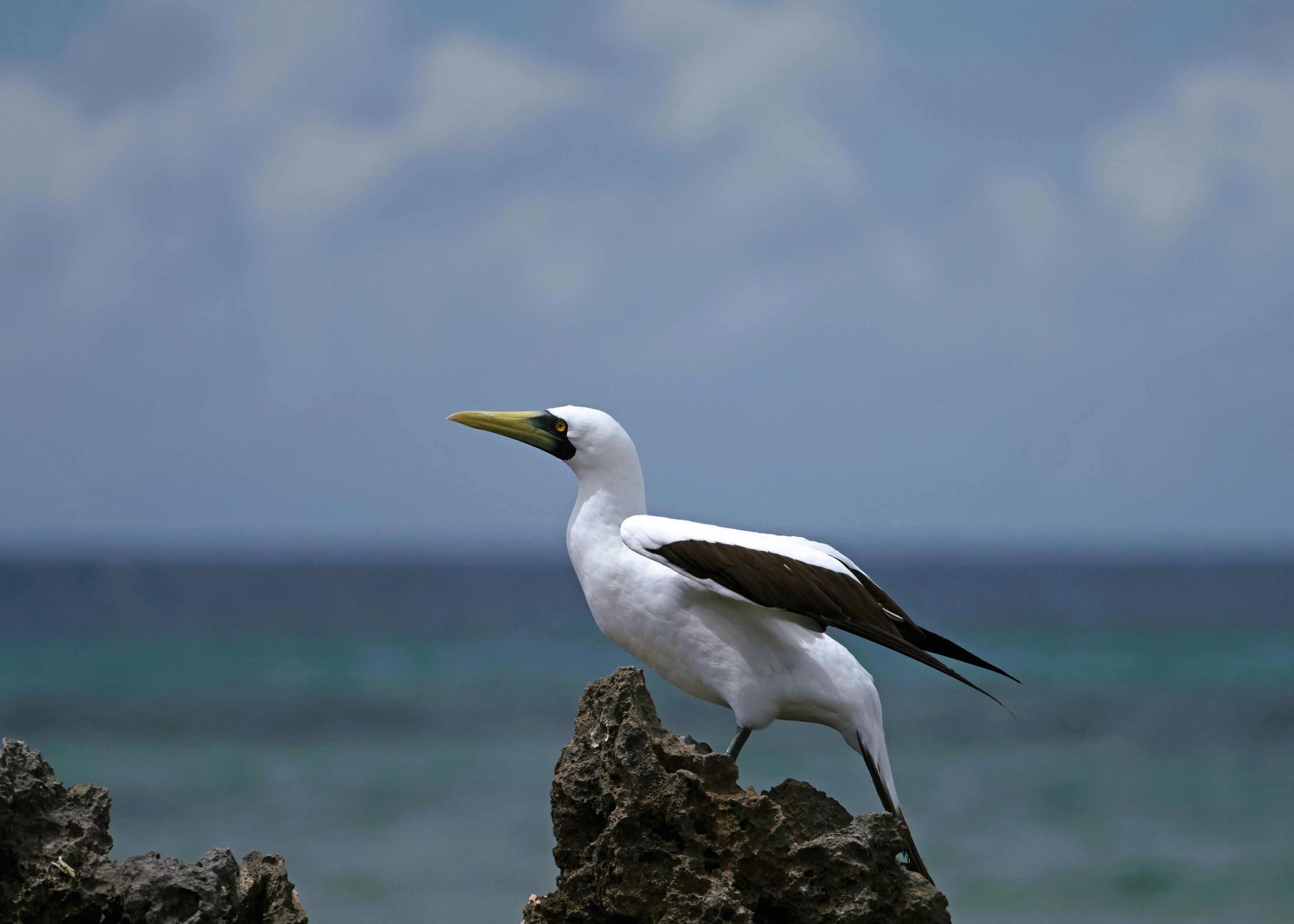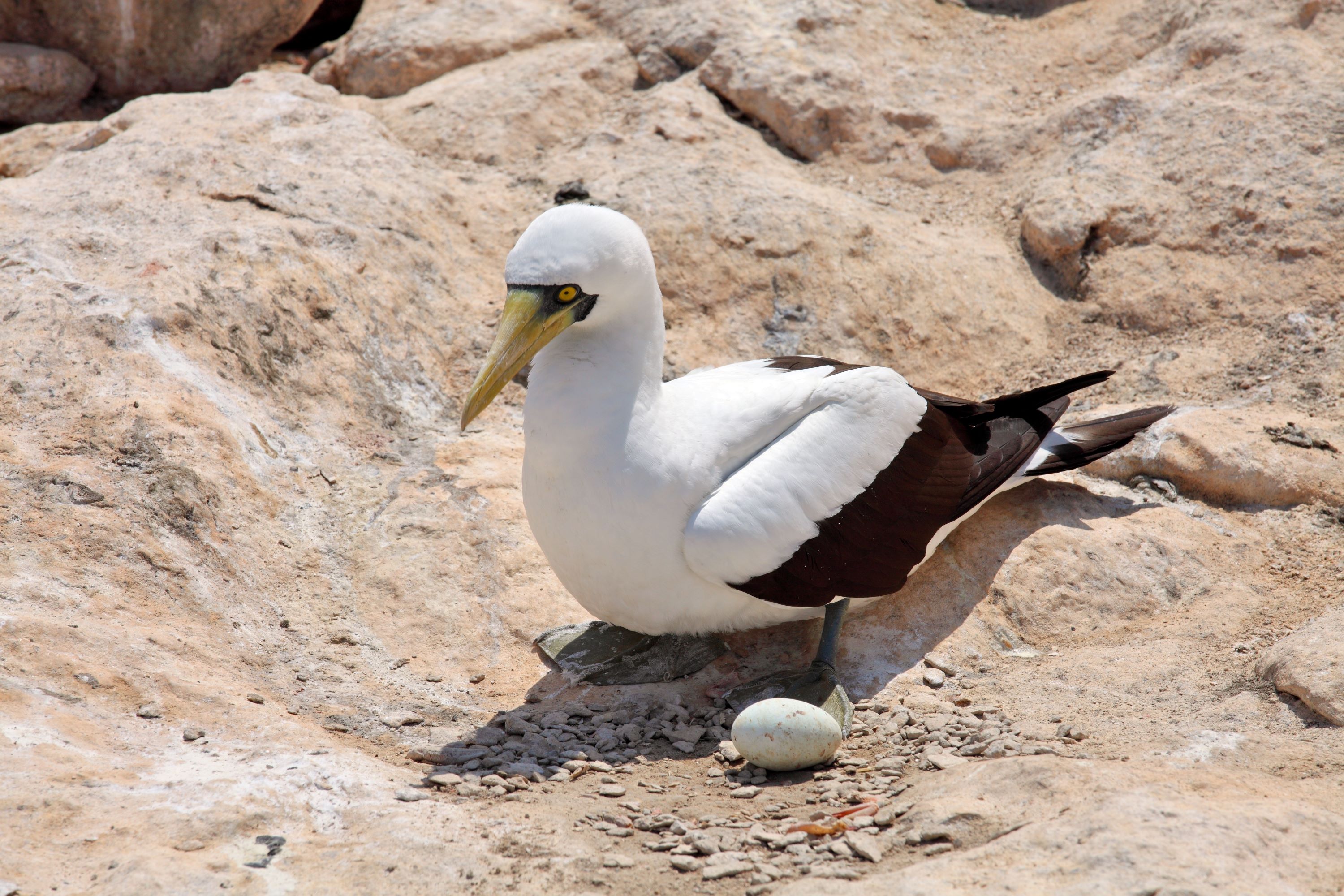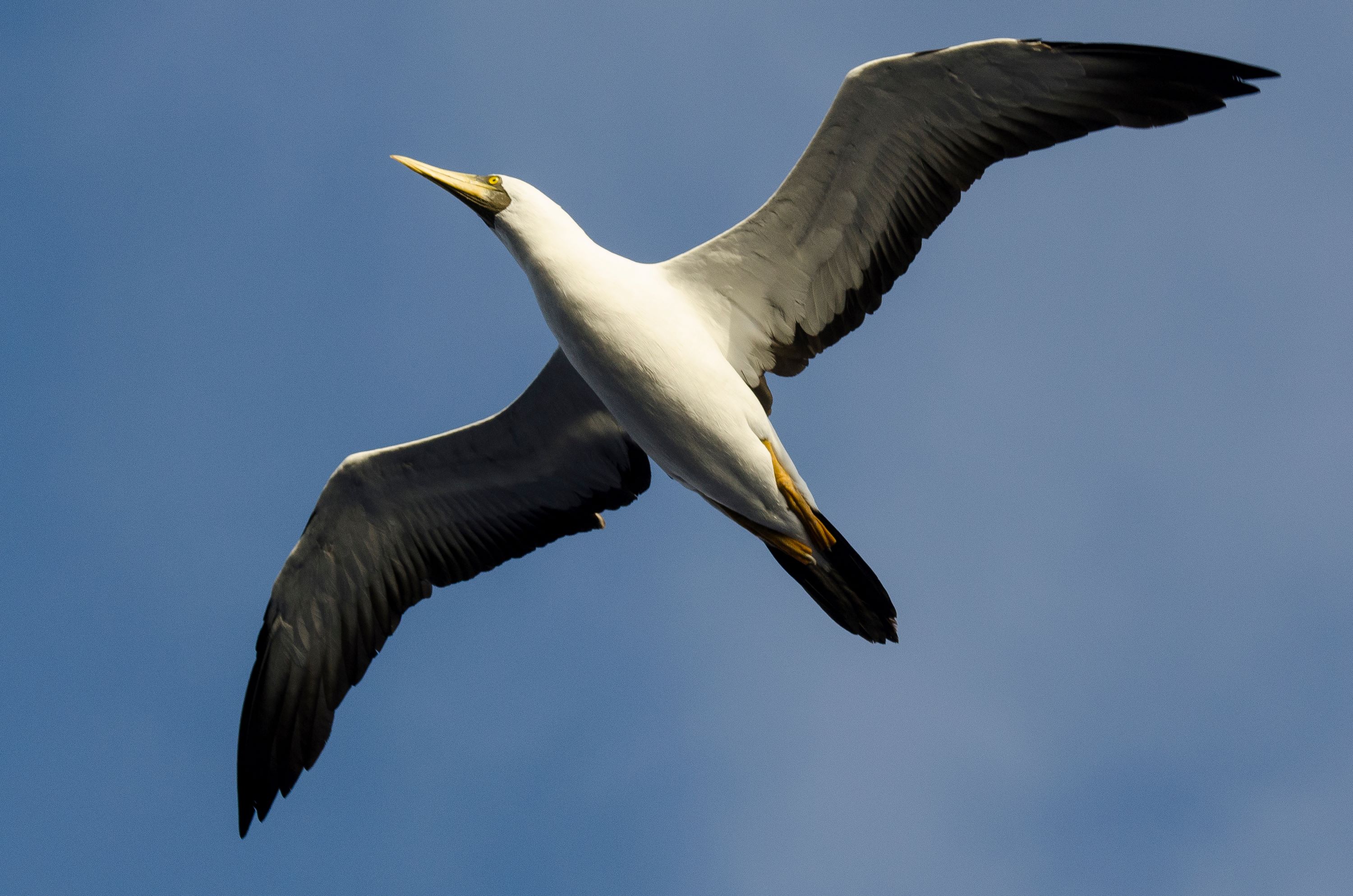
The Masked Booby: Unveiling the Mysteries of Sula dactylatra
Introduction to the Masked Booby
The Masked Booby, known scientifically as Sula dactylatra, is a magnificent seabird belonging to the family Sulidae. Recognized for its striking appearance and remarkable diving abilities, the Masked Booby inhabits tropical oceans around the globe. This species is not just a marvel of nature's design but also plays a significant role in the marine ecosystems, making it a subject of great interest for ornithologists and nature enthusiasts.
Physical Description
Masked Boobies are the largest of the booby species, with adults typically measuring about 75-85 cm in length and boasting a wingspan that can extend up to 1.6 meters. Their plumage is predominantly white, with contrasting black wingtips and tail. The bird's name comes from its distinctive facial markings: a dark mask around the eyes, which stands out against the pale yellow color of its bill and the stark white of its head.
Habitat and Global Distribution
These birds are pelagic, meaning they spend most of their life at sea, coming to land primarily for breeding purposes. The Masked Booby has a wide distribution, found in tropical regions of the Atlantic, Pacific, and Indian Oceans. They prefer nesting on remote, isolated islands, often choosing locations that are free of terrestrial predators.

Feeding Habits and Diet
The diet of the Masked Booby primarily consists of small fish and squid. These birds are skilled hunters, known for their dramatic plunge-diving technique. They can dive from heights of over 30 meters, entering the water at high speeds to catch their prey with precision. Their ability to spot prey from great heights and dive with such accuracy is a testament to their adaptation to a pelagic lifestyle.
Breeding Behavior and Nesting
Masked Boobies are colonial breeders, often forming large nesting colonies on isolated islands. Unlike some seabirds that build elaborate nests, these boobies lay their eggs on bare ground. The selection of nesting sites is crucial for the survival of their eggs and chicks, as they need locations safe from predators and disturbances.
Courtship and Mating Displays
The courtship ritual of the Masked Booby is a fascinating display involving a range of behaviors such as bill-fencing, nodding, and sky-pointing. These rituals not only play a role in mate selection but also help in strengthening the bond between the pairs. Males show off their flying skills and present nest materials to females as part of the courtship.

Egg Laying and Incubation
Typically, the female Masked Booby lays two eggs, several days apart. Both parents share the responsibility of incubating the eggs, which takes about 42-45 days. The parents take turns sitting on the eggs, with each stint lasting several hours to a few days.
Chick Rearing and Parental Care
Once hatched, the chicks are dependent on their parents for food and protection. The parents feed the chicks by regurgitation. In cases where two chicks hatch, siblicide is common, with the older chick typically outcompeting the younger for food and parental care.
Conservation Status and Environmental Challenges
The Masked Booby is currently not considered endangered, but they face various threats, including habitat loss, pollution, and the effects of climate change on oceanic food webs. Conservation efforts are essential to ensure the preservation of their breeding grounds and the sustainability of the marine ecosystems they rely on.
Conclusion: The Fascinating World of the Masked Booby
In conclusion, the Masked Booby (Sula dactylatra) is a species that embodies the beauty and complexity of marine bird life. Their distinctive appearance, specialized hunting techniques, and intricate breeding behaviors offer a window into the adaptations necessary for survival in open ocean environments. While the Masked Booby is not found in inland locations like Utah, their existence and the ecological role they play in marine ecosystems are of global importance, highlighting the interconnectedness of all natural habitats and the need for concerted conservation efforts.